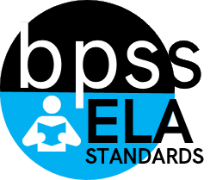ELA-09.W.02 |
9th Grade ELA Targeted Standards
(W) Writing Strand
Cluster: Text Types and Purposes
ELA-09.W.02 Write informative/explanatory texts to examine and convey complex ideas, concepts, and
information clearly and accurately through the effective selection, organization, and analysis of
content. a. Introduce a topic and establish a clear focus, purpose, and thesis statement to and
engage and orient the reader. b. Organize complex ideas, concepts, and information to make important connections and
distinctions; include formatting (e.g., headings), graphics (e.g., figures, tables), and
multimedia when useful to aid comprehension. c. Develop the topic with well-chosen, relevant, and sufficient facts, extended definitions,
concrete details, quotations, or other information and examples appropriate for purpose
and audience. d. Use appropriate and varied transitions to link the major sections of the text, create
cohesion, and clarify the relationships among complex ideas and concepts. e. Use precise language and domain-specific vocabulary to manage the complexity of the
topic. f. Establish and maintain an appropriate style and tone suitable for the norms and
conventions of the discipline in which they are writing. g. Provide a conclusion that follows from and supports the information or explanation
presented (e.g., articulating implications or the significance of the topic).
|
Student Learning Targets:
Knowledge Targets
- I can define expository texts as those that offer explanations.
- I can define and identify elements of formal style and objective tone.
Reasoning Targets
- I can develop the topic with well-chosen, relevant, and sufficient facts, extended definitions, concrete details, quotations, or other information and examples appropriate to the audience’s knowledge of the topic.
- I can synthesize information from various sources within the paragraphs.
Skills (Performance) Targets
- I can introduce a topic; organize complex ideas, concepts, and information to make important connections and distinctions; include formatting (e.g., headings), graphics (e.g., figures, tables), and multimedia when useful to aiding comprehension.
- I can use appropriate and varied transitions to link the major sections of the text, create cohesion, and clarify the relationships among complex ideas and concepts.
- I can use precise language and domain-specific vocabulary to manage the complexity of the topic.
- I can establish and maintain a formal style and objective tone while attending to the norms and conventions of the discipline in which they are writing.
- I can provide a concluding statement or section that follows from and supports the information or explanation presented (e.g., articulating implications or the significance of the topic).
Product Targets
|
| Rubric - Resources |
Proficiency Scale
| Measurement of Progress |
ELA-09-10.W.02 Write informative/explanatory texts to examine and convey complex ideas, concepts, and information clearly and accurately through the effective selection, organization, and analysis of content.
|
Sample Activity
|
| Advanced |
In addition to expectations of proficiency, student provides consistent evidence of in-depth inferences and applications that go beyond what was taught and expected.
|
- |
| Proficient |
The student can
- introduce a topic and establish a clear focus, purpose, and thesis statement to and engage and orient the reader.
- organize complex ideas, concepts, and information to make important connections and distinctions; include formatting (e.g., headings), graphics (e.g., figures, tables), and multimedia when useful to aid comprehension.
- develop the topic with well-chosen, relevant, and sufficient facts, extended definitions, concrete details, quotations, or other information and examples appropriate for purpose and audience.
- use appropriate and varied transitions to link the major sections of the text, create cohesion, and clarify the relationships among complex ideas and concepts.
- use precise language and domain-specific vocabulary to manage the complexity of the topic.
- establish and maintain an appropriate style and tone suitable for the norms and conventions of the discipline in which they are writing.
- provide a conclusion that follows from and supports the information or explanation presented (e.g., articulating implications or the significance of the topic).
|
- |
| Progressing |
There are no major errors or omissions regarding the simpler details and processes; however the student exhibits major errors or omissions regarding the more complex ideas and processes. |
- |
| Novice |
With help, a partial understanding of some of the simpler details and processes and some of the more complex ideas and processes. |
- |
Resources
Websites
Vocabulary |

